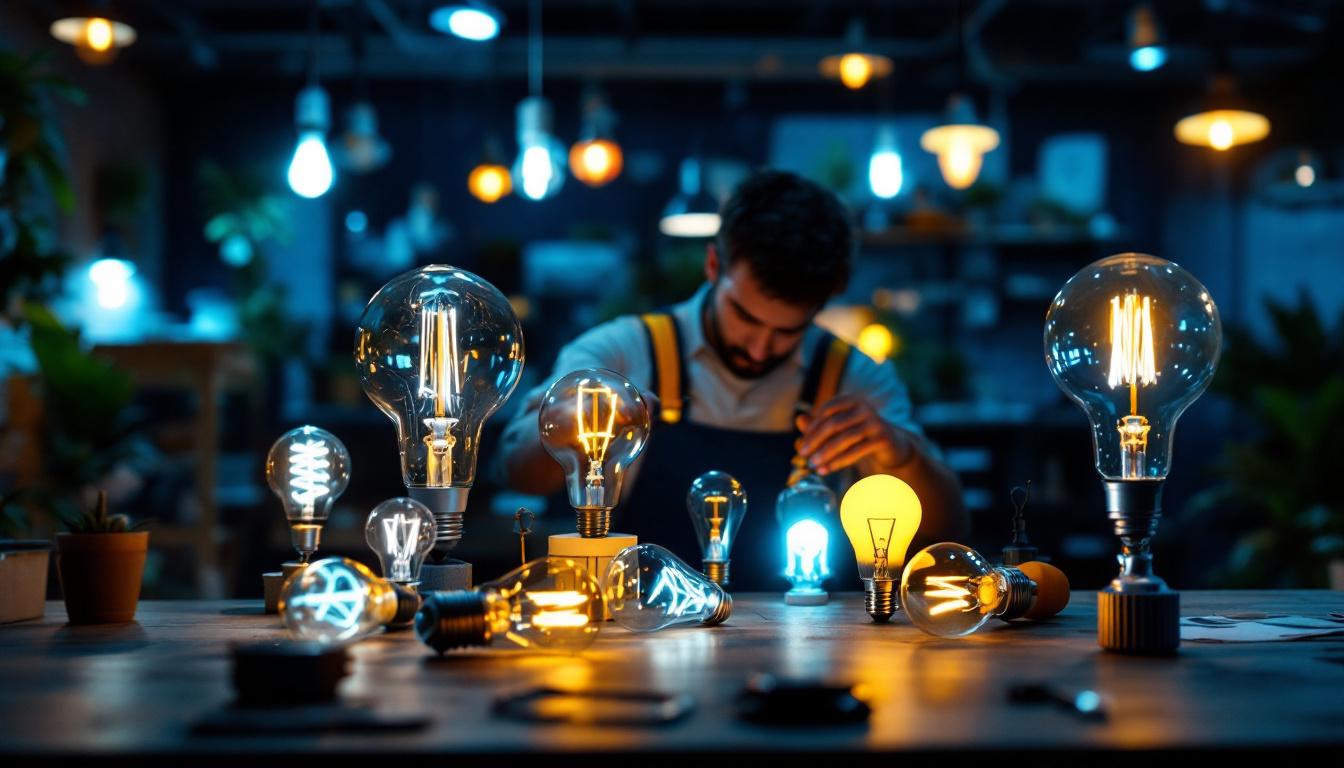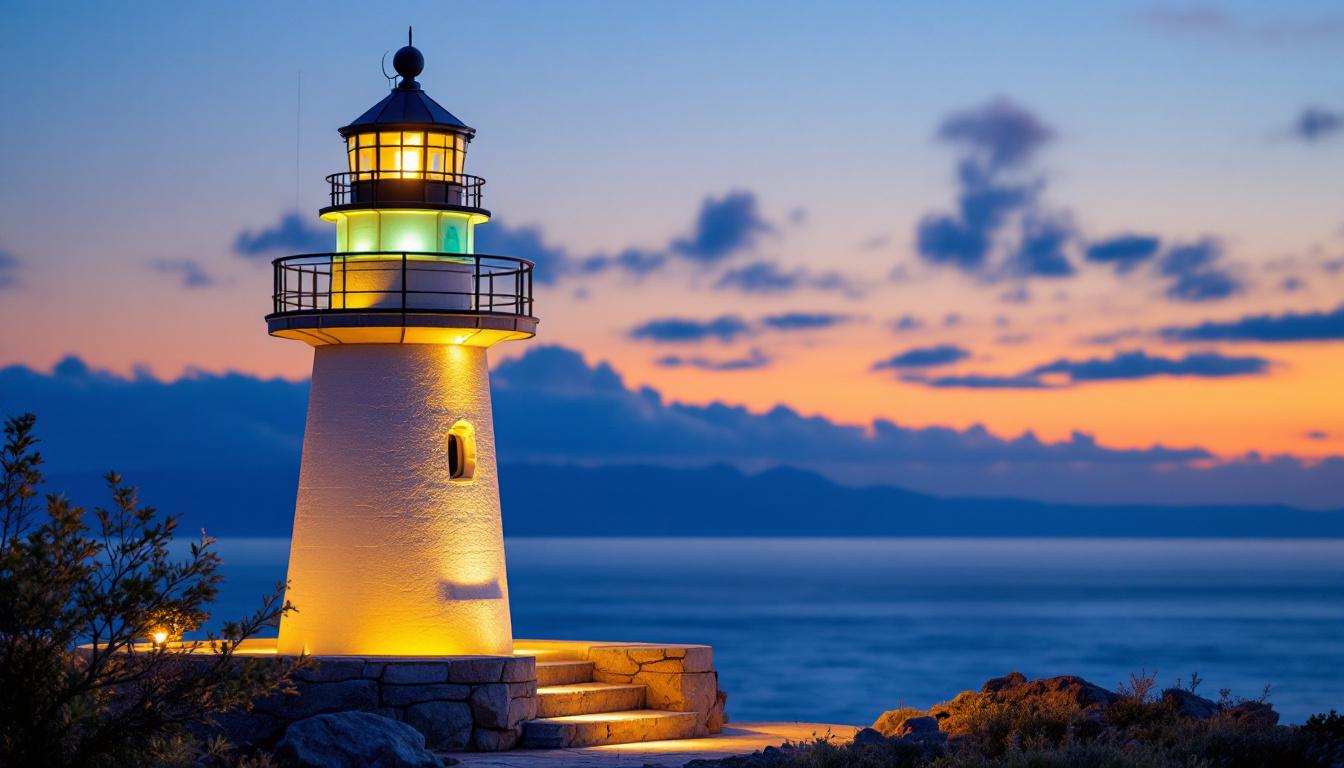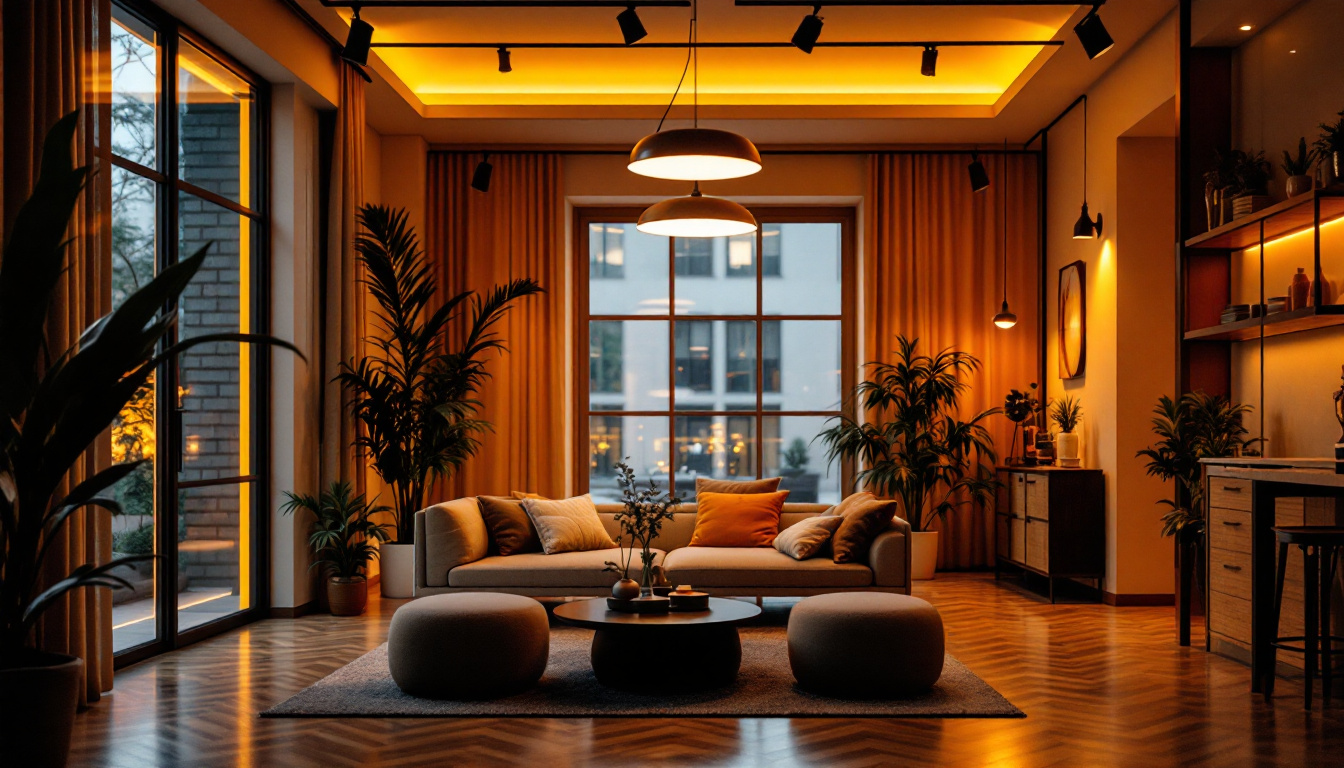
In the ever-evolving world of lighting, understanding the various styles of light bulbs is essential for any lighting contractor. This guide aims to provide a comprehensive overview of the most popular light bulb styles, their applications, and the benefits they offer. By familiarizing yourself with these options, you can make informed decisions that enhance your projects and satisfy your clients.
Incandescent bulbs have been a staple in the lighting industry for over a century. Known for their warm glow and excellent color rendering, these bulbs are often favored for residential applications. Their ability to create a cozy atmosphere has made them a popular choice for homes, where comfort and ambiance are paramount. In addition to their aesthetic appeal, incandescent bulbs have a simple design that has remained largely unchanged, contributing to their enduring presence in the market.
Incandescent bulbs operate by passing an electric current through a thin filament, which heats up and produces light. They typically come in various shapes and sizes, including A19, globe, and candle styles. The light emitted is warm and inviting, making it ideal for living spaces, dining rooms, and bedrooms. Furthermore, the color temperature of incandescent bulbs usually hovers around 2700K, which closely resembles the natural light of a sunset, providing a comforting and familiar glow. This characteristic makes them particularly appealing for creating intimate settings, such as in restaurants or cozy reading nooks.
One of the significant downsides of incandescent bulbs is their energy efficiency. They convert only about 10% of the energy they consume into visible light, while the rest is lost as heat. This inefficiency has led to a decline in their popularity, especially in commercial settings where energy costs are a concern. In recent years, the push for more sustainable energy solutions has prompted many consumers to explore alternatives like LED and CFL bulbs, which offer significantly higher efficiency ratings. However, some enthusiasts argue that the unique quality of light produced by incandescent bulbs cannot be easily replicated by these newer technologies, leading to a niche market that still values their use.
Despite their inefficiency, incandescent bulbs still have their place in specific applications. They are often used in decorative fixtures, where ambiance is more critical than energy savings. They also work well with dimmer switches, allowing for adjustable lighting levels that enhance the mood of a space. Additionally, incandescent bulbs are frequently employed in photography and film production due to their excellent color rendering capabilities, which help to accurately capture skin tones and vibrant colors. Their ability to produce a soft, flattering light makes them a favorite among professionals who prioritize visual aesthetics. Moreover, in the realm of holiday decorations, incandescent string lights continue to be a beloved choice, evoking nostalgia and warmth during festive seasons.
Compact fluorescent lamps (CFLs) emerged as a more energy-efficient alternative to incandescent bulbs. They are designed to fit into standard light sockets while providing the same amount of light as traditional bulbs.
CFLs use about 75% less energy than incandescent bulbs and can last up to ten times longer. This makes them an attractive option for both residential and commercial applications. However, they do contain small amounts of mercury, which requires careful disposal.
While CFLs are more energy-efficient, they can produce a cooler light that some users find less appealing than the warm glow of incandescent bulbs. It’s essential to consider the color temperature when selecting CFLs for a project, as they are available in various shades, from warm white to daylight.
CFLs are suitable for a wide range of applications, including recessed lighting, table lamps, and outdoor fixtures. They are particularly beneficial in areas where lights are left on for extended periods, such as hallways and offices.
Light Emitting Diodes (LEDs) have revolutionized the lighting industry with their unmatched energy efficiency and versatility. As a contractor, understanding the various types of LED bulbs and their applications is crucial for modern projects.
LEDs use up to 80% less energy than incandescent bulbs and can last up to 25 times longer. This longevity translates into lower maintenance costs and less frequent replacements, making them a cost-effective choice for both residential and commercial applications.
LEDs are available in a wide range of color temperatures, from warm white to cool daylight. This variety allows contractors to select the perfect lighting for any environment, whether it’s a cozy living room or a bright office space. Additionally, many LEDs now offer excellent color rendering, making them suitable for tasks that require accurate color perception.
LEDs are incredibly versatile and can be used in various applications, including recessed lighting, track lighting, and outdoor fixtures. Their compact size also allows for creative designs, such as under-cabinet lighting and accent lighting. Furthermore, the advent of smart LED technology enables contractors to offer clients programmable lighting solutions that enhance convenience and energy savings.
Halogen bulbs are a type of incandescent bulb that offers improved efficiency and a longer lifespan. They are often used in applications where high-quality lighting is essential, such as in retail and art galleries.
Halogen bulbs operate similarly to traditional incandescent bulbs but contain a halogen gas that allows the filament to burn hotter and brighter. This results in a whiter light with better color rendering, making them ideal for showcasing products or artwork.
While halogen bulbs are more energy-efficient than standard incandescent bulbs, they still consume more energy than CFLs or LEDs. However, their longer lifespan—up to 2,000 hours—makes them a viable option for specific applications where high-quality light is paramount.
Halogen bulbs are commonly used in track lighting, recessed fixtures, and outdoor lighting. Their ability to produce a bright, focused beam makes them suitable for task lighting in kitchens and workspaces, as well as for accenting architectural features.
As technology continues to advance, smart bulbs have become increasingly popular among homeowners and businesses alike. These bulbs offer unique features that enhance convenience and energy efficiency.
Smart bulbs can connect to home networks via Wi-Fi or Bluetooth, allowing users to control lighting remotely through smartphone apps or voice-activated devices. This level of control enables users to adjust brightness, color, and even set schedules for when lights turn on and off.
Many smart bulbs are LED-based, which means they are inherently energy-efficient. Additionally, their ability to be programmed or controlled remotely can lead to further energy savings by ensuring lights are only on when needed.
Smart bulbs are ideal for residential applications, such as living rooms, bedrooms, and outdoor spaces. They can also be beneficial in commercial settings, where customizable lighting can enhance the customer experience. For contractors, offering smart lighting solutions can set them apart in a competitive market.
In addition to the standard bulb types, there are various specialty bulbs designed for specific applications. Understanding these options can help contractors cater to unique client needs.
Decorative bulbs, such as Edison-style and globe bulbs, are popular for their aesthetic appeal. They are often used in fixtures where the bulb is visible, such as pendant lights and chandeliers. These bulbs can add a vintage or modern touch to a space, depending on the design.
Flood and spot bulbs are designed to provide concentrated light for specific applications. Flood bulbs emit a wide beam of light, making them suitable for illuminating large areas, while spot bulbs produce a narrow beam, ideal for highlighting features or artwork. Understanding the differences between these types can help contractors select the right bulb for the job.
For contractors working with indoor gardens or greenhouses, plant growth bulbs are essential. These bulbs emit specific wavelengths of light that promote photosynthesis, helping plants thrive indoors. They are available in various types, including LED and fluorescent options, tailored for different types of plants.
With so many options available, selecting the right light bulb for a project can be daunting. However, considering several key factors can simplify the decision-making process.
Understanding the client’s needs and preferences is crucial when selecting light bulbs. Factors such as the desired ambiance, energy efficiency, and budget should be discussed upfront. This ensures that the chosen lighting solution aligns with the client’s vision and requirements.
The application and environment where the bulbs will be used also play a significant role in the selection process. For example, outdoor fixtures require bulbs that can withstand various weather conditions, while indoor spaces may prioritize aesthetics and color temperature. Assessing the specific requirements of each project will guide contractors in making the best choices.
As sustainability becomes increasingly important, many clients prioritize energy-efficient lighting solutions. Contractors should be well-versed in the energy consumption and lifespan of different bulb types to provide clients with options that align with their values and goals. Offering energy-efficient solutions can enhance a contractor’s reputation and appeal to environmentally conscious clients.
In conclusion, understanding the various light bulb styles is essential for lighting contractors looking to provide the best solutions for their clients. From incandescent and CFLs to LEDs and smart bulbs, each type has its unique characteristics and applications. By considering client needs, project requirements, and energy efficiency, contractors can make informed decisions that enhance their projects and satisfy their clients. Staying updated on the latest trends and technologies in lighting will also ensure that contractors remain competitive in an ever-changing market.
Ready to elevate your lighting projects with the best styles and the highest quality bulbs? Look no further than LumenWholesale, where we provide contractors with spec-grade lighting products at unbeatable wholesale prices. Say goodbye to local distributor markups and hello to a vast selection of reliable, high-performance lighting that meets the highest industry standards. Plus, with free shipping on bulk orders, you can get premium lighting at the best value — without hidden fees or compromises. Don’t miss out on the perfect blend of quality, affordability, and convenience. Visit LumenWholesale today and experience Wholesale Lighting at the Best Value for your next project.

Discover how outdoor lighthouse lighting enhances safety, visibility, and aesthetic appeal in modern solutions.

Discover the transformative power of 5000K light in enhancing lighting installation projects.

Discover effective strategies for training your team in linear lighting techniques.

Discover the top mistakes lighting contractors make when dealing with fancy light bulbs.